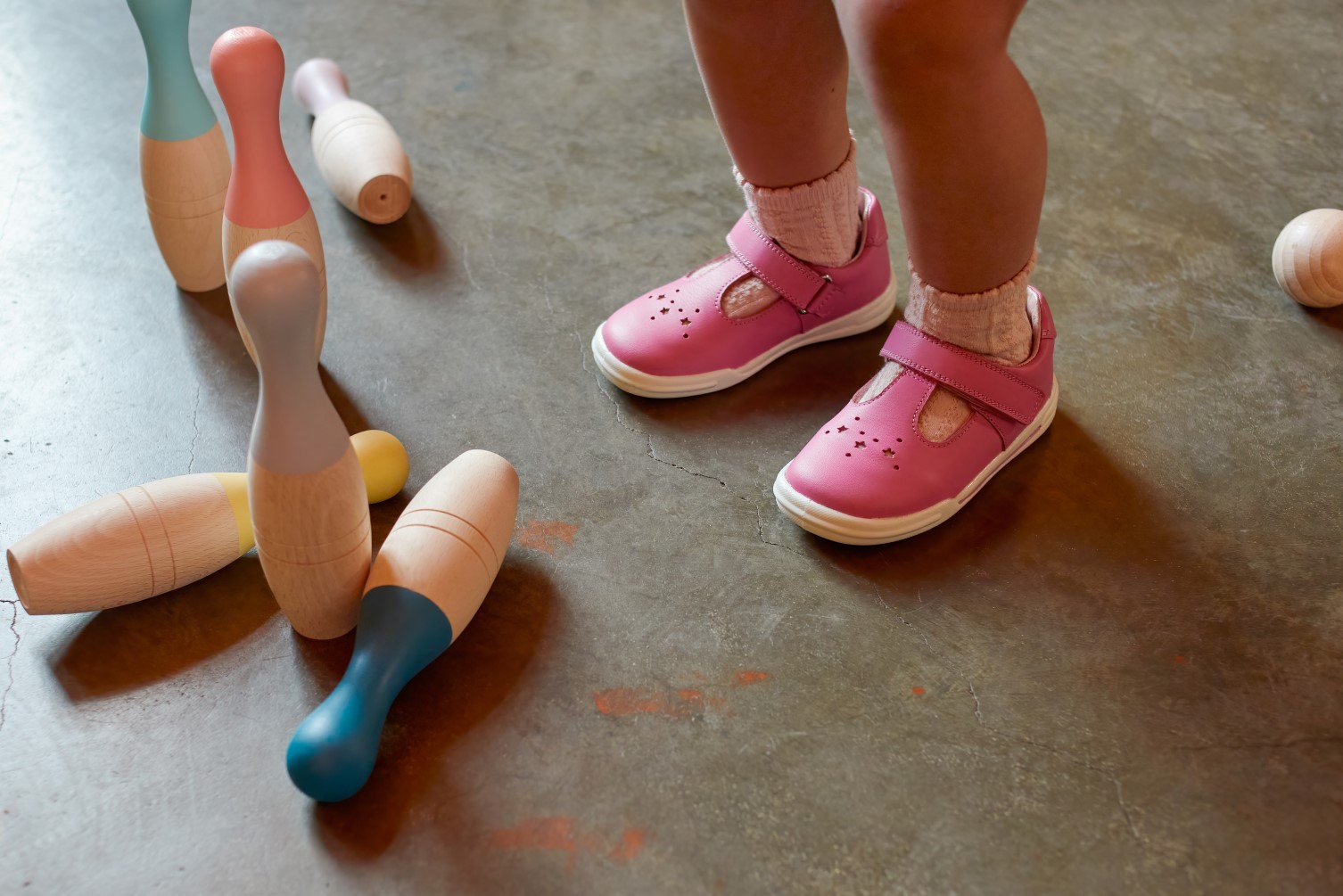
Children’s socks are adorable, and a practical accessory for your bundle of joy. However, toddlers and young children grow so fast that it makes trying to keep up with their sizes a constant mission. So, if you’re struggling to understand how to find the right size socks for your child, you’ve come to the right place.
In this article, we’ll explore how sock sizes work, and how you can measure your child’s foot for the best fit.
Socks are an important protective layer for your child’s feet, and you need to make sure you choose the right style and fit for different situations. For example, you’ll want a lightweight, breathable sock to fit in our comfy and playful canvas shoes. On the other hand, you’ll likely want something thicker and warmer to wear with wellies to keep them cosy in wet weather.
But, understanding sock sizes can be confusing, especially when the standard format changes between adults and children. As you’re aware, adult socks tend to be split into small, medium and large. These then correspond with a range of foot sizes, so for example, women’s socks from one brand could look something like this.
On the other hand, children’s socks tend to be categorised by age. It’s only when they’re older that this begins to include shoe size. Whilst brands may use their own naming conventions for their products, most of the time kids socks are split into the following categories.
However, it’s important to remember that sizes aren’t usually standardised across manufacturers. This means you’ll need to check before you buy from a new company to ensure any socks you choose will fit properly. Most brands will have size guides with their products, so you can always refer to these when you’re unsure.
The majority of the time, if you see a series of numbers on your socks, these are equivalent to your shoe size. This is because they’re both decided by your foot measurements, so there’s minimal variation between the two. The only way they really differ is that socks can fit several sizes at once because they’re made of soft, flexible materials. Shoes are more rigid - a person with size eight feet wouldn’t fit in a size six shoe.
As we mentioned above, sock sizes are subject to change depending on the brand selling them. So how can you measure sock size to find the right fit for your child? Below, we’ve explored three methods you can use to accurately identify the correct sock size.
1. Measure their feet
The first, and most accurate, way to identify what size socks your child needs is to measure their feet. Most products will have measurements on their packaging or website, in either inches or centimetres, to allow you to find exactly what size you need.
If your child is able to stand, you can use a ruler to measure from their heel to the end of their longest toe. Alternatively, if they can’t keep still long enough, try drawing around their foot on paper and measuring from there. For babies and toddlers, a flexible measuring tape will be easier to manipulate around their foot to get a precise figure.
If you’re ever unsure about how to size socks and shoes for your child, check out our handy home measurement guide to learn all about the best ways to find the right fit for your child’s feet.
2. Use age and shoe size as a guide
If you’re unable to measure your child’s feet, you should be able to use their age and shoe size as a rough guide to purchase the correct sized socks. Most highstreet vendors provide conversions between the sizes to make shopping for socks more convenient for their customers.
3. Try on in-store
If you’re still struggling to decide what size to pick, you should consider trying socks on in-store. Whilst not always possible, if you have the time and access this may be worth it - especially for new brands where you’re uncertain of their sizing conventions.
If you do choose this option, make sure to follow these steps.
Trying on socks in-store can also be a good option if your child is between sizes because this will let you see and feel the best option.
Socks provide an essential barrier between your child’s foot and the world around them - helping to prevent blisters, sunburn and more. However, they need to fit properly, or they can cause more harm than good.
This is especially true for babies and toddlers. When a baby is born, their foot bones are still cartilage, and won’t start to fully ossify (turn into bone) until they’re older. In fact, your child’s feet won’t be fully developed until they’re 18. This means they’re incredibly delicate, and need to develop naturally. Socks that are too small are not only uncomfortable, but too much compression can affect the growth of children’s feet, and may cause problems when they’re older.
Author: Click Consult, published 27-07-2023.